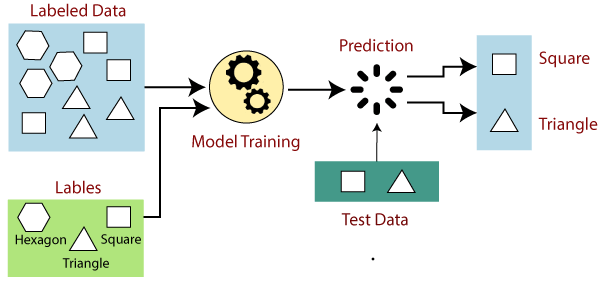How Supervised Learning Works

Supervised learning is a type of machine learning algorithm that involves training a model on a labeled dataset, where each example in the dataset consists of input features and a corresponding target variable or output label. The goal of supervised learning is to learn a mapping from input features to output labels, such that the model can make accurate predictions on unseen data.
Here's how supervised learning works in more detail:
-
Dataset Preparation:
- In supervised learning, the first step is to collect and prepare a labeled dataset. The dataset is divided into two main components:
- Input Features: These are the variables or attributes that describe the characteristics of each data instance. Input features are typically represented as a vector or array of numerical values.
- Output Labels: These are the target variables or values that the model aims to predict. Output labels can be categorical (classification) or continuous (regression) variables, depending on the nature of the prediction task.
-
Model Selection:
- Next, a suitable machine learning model is selected based on the characteristics of the dataset and the nature of the prediction task. Common supervised learning models include linear regression, logistic regression, decision trees, support vector machines, naive Bayes classifiers, and neural networks.
-
Training the Model:
- The selected model is trained on the labeled dataset to learn the relationship between input features and output labels. During the training process, the model adjusts its parameters or coefficients iteratively to minimize the difference between the predicted outputs and the true labels in the training data. This process is often referred to as optimization or parameter estimation.
-
Evaluation:
- After training the model, it is evaluated on a separate portion of the dataset called the validation set or test set. The performance of the model is assessed using evaluation metrics appropriate for the prediction task. For classification tasks, common evaluation metrics include accuracy, precision, recall, F1-score, and area under the ROC curve (AUC). For regression tasks, metrics such as mean squared error (MSE) or mean absolute error (MAE) are commonly used.
-
Model Tuning and Optimization:
- Based on the evaluation results, the model may be fine-tuned or optimized to improve its performance further. This process may involve adjusting hyperparameters, feature engineering, regularization techniques, or trying different algorithms to find the optimal configuration for the model.
-
Deployment and Prediction:
- Once the model has been trained and validated, it can be deployed into production to make predictions on new, unseen data. The trained model takes input features as input and generates predictions or class probabilities as output. These predictions can then be used for decision-making, classification, or regression tasks in real-world applications.
Throughout the supervised learning process, it is essential to monitor the model's performance, iterate on the model design and optimization strategies, and ensure that the model generalizes well to new data. Supervised learning is widely used in various domains, including healthcare, finance, marketing, image recognition, natural language processing, and many others, where labeled data is available for training predictive models.
Thank you,
